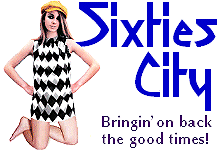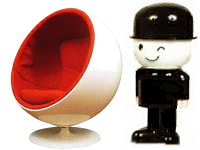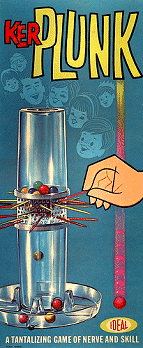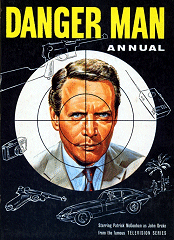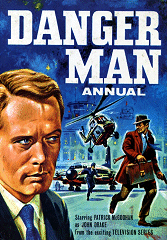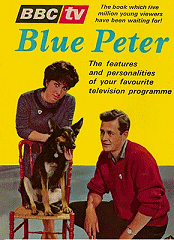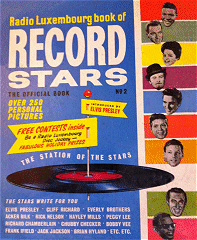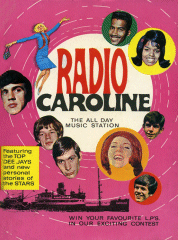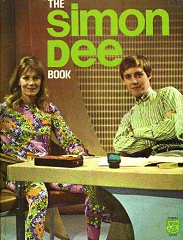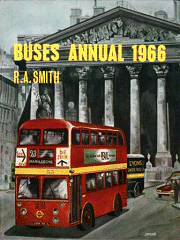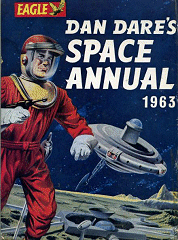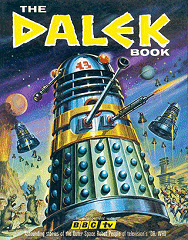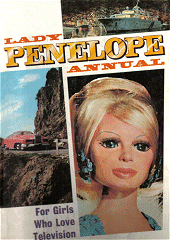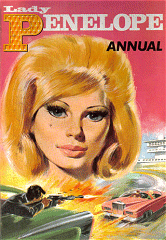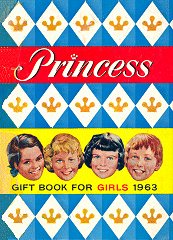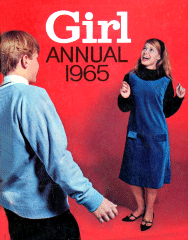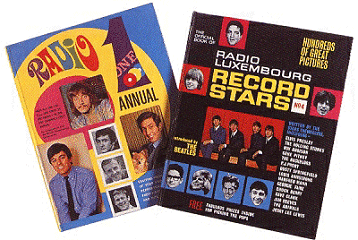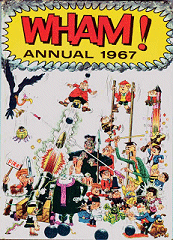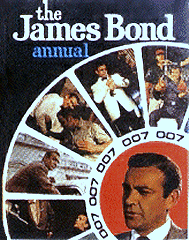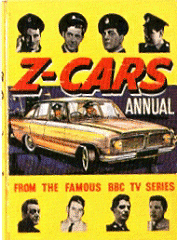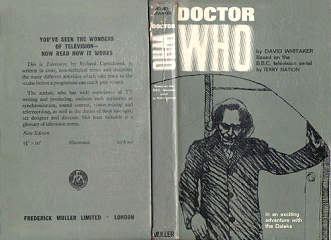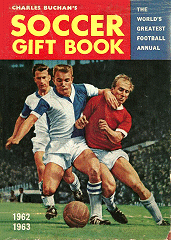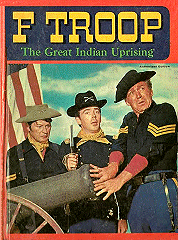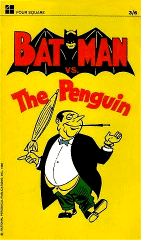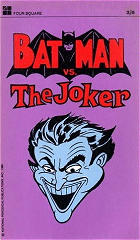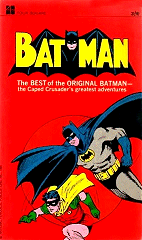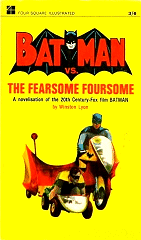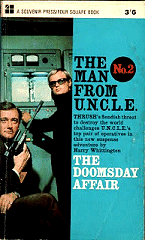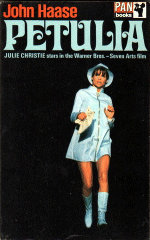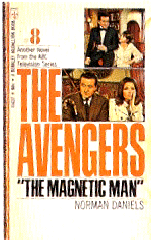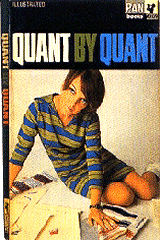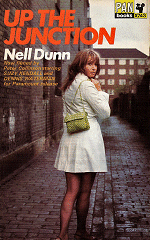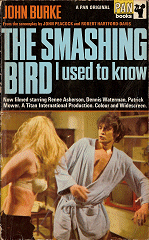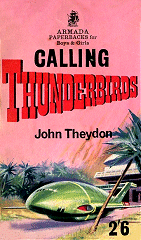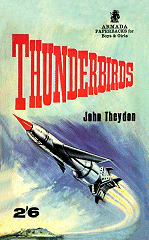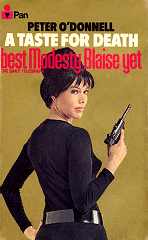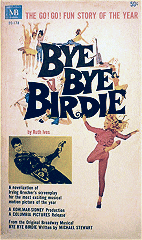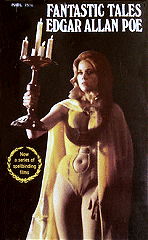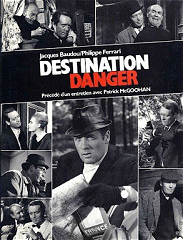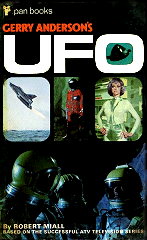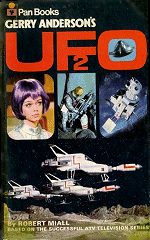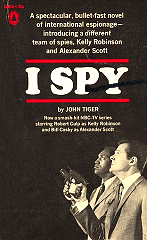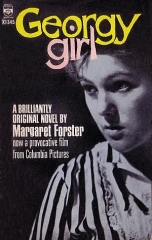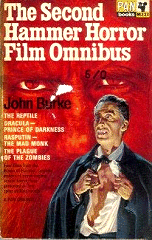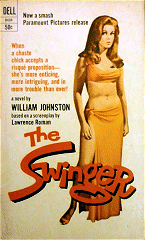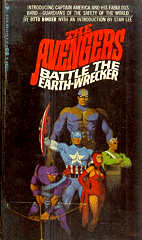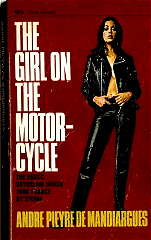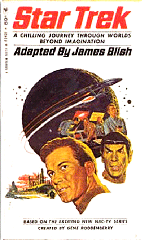|
|
'Blow' inflatable
chair made by Zanotta
c.1967
|
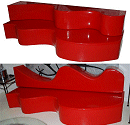 |
'Superonda'
settee
by Archizoom
c.1967 |
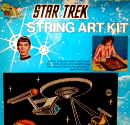 |
DIY string
pictures were
popular as a decorative craft in the late 1960s through kits and books
|
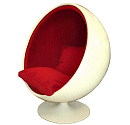 |
Eero Arnio
'ball' chair as seen in
'The Prisoner' and 'The Italian Job'
Made by ASKO
c.1965
|
|
|
Inflatable
furniture
Quasar Khanh
|
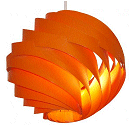 |
Make-it-yourself
plastic lampshades
'Turbo' 1965
by Louis Weisdorf |
 |
BIBA coffee
table
c.1969
|
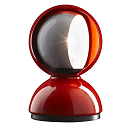 |
'Eclisse'
lamp - with an inner
rotatable shade to simulate
lunar phases. Vico Magistretti
for Artemide, 1967
|
|
|
Wicker hanging
chair
c.1968
|
 |
'Tomoton'
compressed paper chair
Bernard Holdaway
c.1966 |
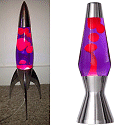 |
The Mathmos
Astro lamp has been in continuous production in England since its invention
in 1963
|
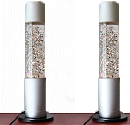 |
. . . and
its cheaper, less impressive
cousin, the glitter lamp . .
|
|
|
'Viscontea'
cocoon lamp on wire frame. Achille and Pier Giacomo Castiglioni
for Flos, Italy, 1960
|
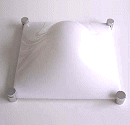 |
Elio Martinelli
'Bolla' bubble lamp could be wall or table mounted. Manufactured by
Martinelli Luce, Italy, 1965
|
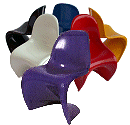 |
Verner Panton
stacking chairs
c.1968
|
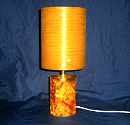 |
. . . and
cheaper still, the Shattaline
resin lamp
|
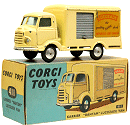
|
First
produced by Mettoy Playcraft Ltd in July 1956 as competition to Meccano's
Dinky Toys, February 1960 saw the die-cast toys featuring elements such
as boots that opened to reveal luggage, bonnets that housed finely-detailed
engines and removable plastic tops for convertible models like the Jaguar
E-type. Battery-powered front and rear lights were also introduced during
this period. In 1964 Corgi moved into the adult collector market with a
range of highly detailed models of vintage cars called 'Corgi Classics'. |
|
Dinky
Toys were die-cast miniature vehicles produced by Meccano Ltd who were also
makers of Hornby Railways. They were originally model railway accessories
called 'Modelled Miniatures' and were called 'Dinky Toys' for the first
time in April 1934. In November 1958, Meccano introduced the Dublo Dinky
range of models in 1:78 (OO) scale. There were a total 15 Dublo models which
were phased out in 1968 and replaced by Mini-Dinky Toys, a second range
of small scale models larger than the Matchbox range at 1:65. Arguably,
Dinky's most famous tie-ins were with the various Gerry Anderson TV series
vehicles. |
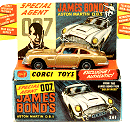
|
Corgi
produced many cars based on vehicles used in films and television shows
such as the James Bond Aston Martin DB5 and Toyota 2000GT, The Saint's Volvo
P1800, Batman's Batmobile (with Batboat in 1967), the Daktari Gift Set (Land
Rover), The Man From U.N.C.L.E. 'THRUSH-Buster', The Avengers Bentley and
Lotus Elan, The 'Monkeemobile', The 'Yellow Submarine', The Green Hornet's
'Black Beauty and Chitty Chitty Bang Bang, the last of which has become
one of the most-desired Corgi collectibles. There was also a 'comic' vehicle
range in 1969. |
|
Lesney Products(now owned by Mattel) introduced the 'Matchbox' range in
1953. The range of models changed regularly but its basic line always contained
75 cars. New cars were introduced and less popular ones were put out to
grass but the “Matchbox 75” remained a constant of the toy world. By 1968,
Matchbox was the biggest-selling brand of small diecast model cars worldwide.
The average model featured plastic windows, interiors, tyres (often with
separate disc wheels), and other accessories, spring suspension and opening
parts. Some even featured steering, including the pressure-based AutoSteer
system introduced in 1969. |

|
Mettoy
(Corgi) also developed a smaller pocket-sized range known as Husky cars
in 1964 (later renamed Corgi Junior). The success of these led to the creation
of Rockets, special small cars with fast wheels designed especially for
racetracks. In 1965 Corgi started marketing licensed toys, the first of
which was the Aston Martin DB5 from the James Bond movies. Like its big
brother, the car featured a working ejector seat. |
|
'Sindy - The Doll You Love To Dress' - 1962
First manufactured by Pedigree of Kent and bearing a striking resemblance
to the American doll 'Tammy', she was launched with a then unprecedented
advertising campaign. Sindy became an instant hit with 200,000 dolls sold
by Christmas of that year. Now considered to be the British version of 'Barbie',
she was joined by a little sister called 'Patch' and, in 1965, a boyfriend
'Paul'. In 1967 Paul bit the dust when she was joined by 'friends' Mitzi,
Betsy, Vicki and Poppet. |
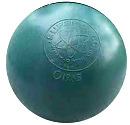
|
Wham-O’s
'Super Ball', marketed in Summer 1965, was invented by chemist Norm Stingly.
By combining compounds under extreme pressure and temperature he produced
a material called ‘Zectron,’ which was able to retain a high degree of bounciness
when dropped. The company sold some 20 million of these during the 1960s.
Wham-O also introduced us to the Frisbee, the Hula Hoop, Slip 'N Slide,
Trac-Ball, Silly String and the Boogie Board. |
|
Ruth
Handler, co-founder of Mattel Toys, unveiled 'Barbie', the teenage fashion
model, at New York's annual Toy Fair in 1959. In the early Sixties she began
wearing designer outfits such as Gay Parisienne modelled after Parisian
haute couture fashions. As the 60s gave way to the "British Invasion", Barbie
got a fashion makeover and her body style, hair, face and makeup changed
as well. In addition to wearing mod fashions, Barbie's body acquired a new
'Twist 'N Turn' waist and a younger face with rooted eyelashes. |
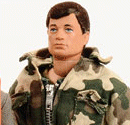
|
| 'Action Man' 12"
posable figure by Palitoy Ltd, of Coalville, Leicester. Introduced
January 1966, under licence from Hasbro, hence the similarity in facial
appearance including the trademark scar and US-style uniforms, it
had fierce competition from Pedigree's 'Tommy Gunn' (right, 66-68)
which was actually shorter than Action Man and had a sun-tan! The
Tommy Gun body moulds were subsequently used for the 'Captain Scarlet'
action figures. |
|
|
|
G.I.
Joe owes its existence to Barbie. Toy creator Stan Weston thought that since
Barbie was so popular, he could come up with a similar toy for boys: a line
of Barbie-sized dolls with a military theme to be marketed for boys. In
1963 he took the concept to toy manufacturers Hassenfeld Brothers (who later
shortened the name to Hasbro). It was initially offered as a sailor, soldier,
airman and marine. In 1967, Hasbro expanded the line to include a series
of talking figures. In the late Sixties the line became known as 'The Adventures
of G.I. Joe' and, in 1970, Hasbro settled on the name 'Adventure Team'.
|
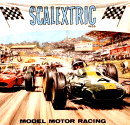
|
Minimodels
introduced a range of metal bodied model racing cars in 1952 which contained
a unique type of clockwork motor. The inventor of these was Mr B. Francis
and the trade name was SCALEX. Minimodels was sold to the Lines Brothers
'Tri-ang' group in November 1958. In 1963, the four new cars launched
made a total of 18 different cars, two motorcycle combinations, complete
with Tri-ang's RX motor and accurately moulded plastic bodies. The variable
speed hand throttle replaced the original controller and new track sections
and buildings enabled reproductions of actual race tracks to be launched.
|
|
The
mathematician Bruno Abakanowicz invented the 'spirograph' between 1881 and
1900. In 1965 Denys Fisher introduced children to geometry with a set of
ridged and toothed plastic shapes called Spirograph. This amazing toy created
intricate designs when a pen traced the path of a small shape as it rolled
inside one of the bigger ones. It was awarded ‘Toy of the Year’ in '67,
and was then acquired and marketed by Kenner. In 1968, Kenner introduced
Spirotot, a less complex version of Spirograph, for preschool-age children. |
 |
Careers,
devised by sociologist James Cooke Brown in the mid-1950s, was a board game
where players could set their own victory conditions by choosing to pursue
Fame, Happiness, Money, or a combination of all three, to reach a total
of 60 points. The 'careers' available were updated over 60 years of revised
editions, reflecting changes in social perceptions, for instance, the original
careers offered in the game were Farming, Big Business, Out to Sea, Politics,
Hollywood, Expedition to the Moon and Uranium Prospecting whereas one of
the 1970s versions offered Big Business, Sports, Teaching, Politics, Arts,
Space and Ecology. |
|
Twister,
invented by Reyn Guyer, was a large vinyl mat and a spin-board introduced
to US TV viewers when Johnny Carson played it with Eva Gabor on his late
night talk show in 1966. Players took turns spinning the plastic arrow
around a small board with 4 quadrants: right leg, left leg, right arm,
left arm. If your arrow landed on a blue spot in the 'right leg corner,
you put your relevant body part on the blue spot that was the most physically
possible for you to reach. The first player to collapse was the loser
but since he usually brought all the others down with him, the winners
didn’t have much opportunity to enjoy their success.
|
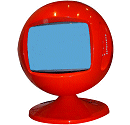
'Keracolor' television
Arthur Bracegirdle
c.1968
|
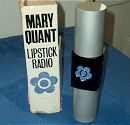
'Mary Quant'
novelty
lipstick radio |
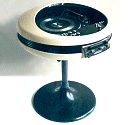
The Weltron 2007
hi-fi table |
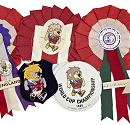
World Cup 1966
World Cup Willie
football memorabilia |
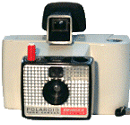 Polaroid Instant Camera
Polaroid Instant Camera
Swinger 20
1965 |
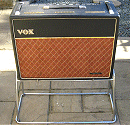 Vox AC30
Vox AC30
Sound Amplifier
1963 |
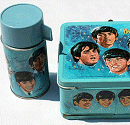
'Beatles'
Flask and lunch box
1965 |
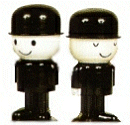
'Homepride'
'Fred' flour graders
Spillers 1965 |
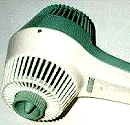
Philips HK4100
hair dryer
1965 |
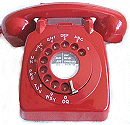
GPO Telephone
Red 706
1965 |
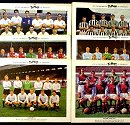
Ty-Phoo Tea
Football Team Cards
1964/65 |
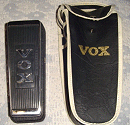
VOX V846
Wah Wah Pedal
February 1967 |
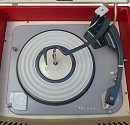 Dansette 'Conquest'
Dansette 'Conquest'
Record Player
1962
|
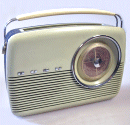
Bush TR 82C
Transistor Radio
1960 |
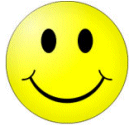
The 'Smiley'
created
1963
|
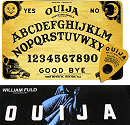
Ouija Board
Parker Brothers
1967 |
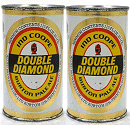
Double Diamond
Beer Cans
Ind Coope |
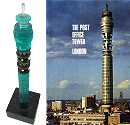
Post Office Tower
Souvenirs
1965 |
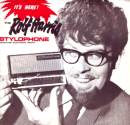
Dubreq
Stylophone
1967 |
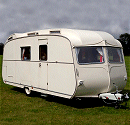
Carlight Continental
Caravan
1964 |
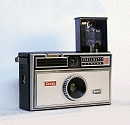
Kodak 126 format
Instamatic camera
1963
|
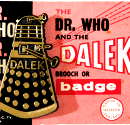
Dalek Badge
Woolworths
1964-65 |
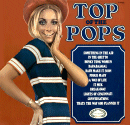 'Top Of The Pops' LPs
'Top Of The Pops' LPs
Hallmark Records
1968 on |
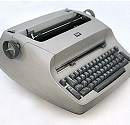
IBM Selectric
Typeweriter
1961 |
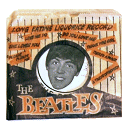
Liquorice records
Clevedon Confectionery
c.1964 |
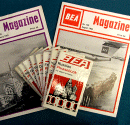
BEA
Magazines
August 1965 |
|
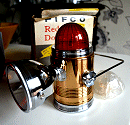
PIFCO
Red Dome Lantern
50s / 60s |
